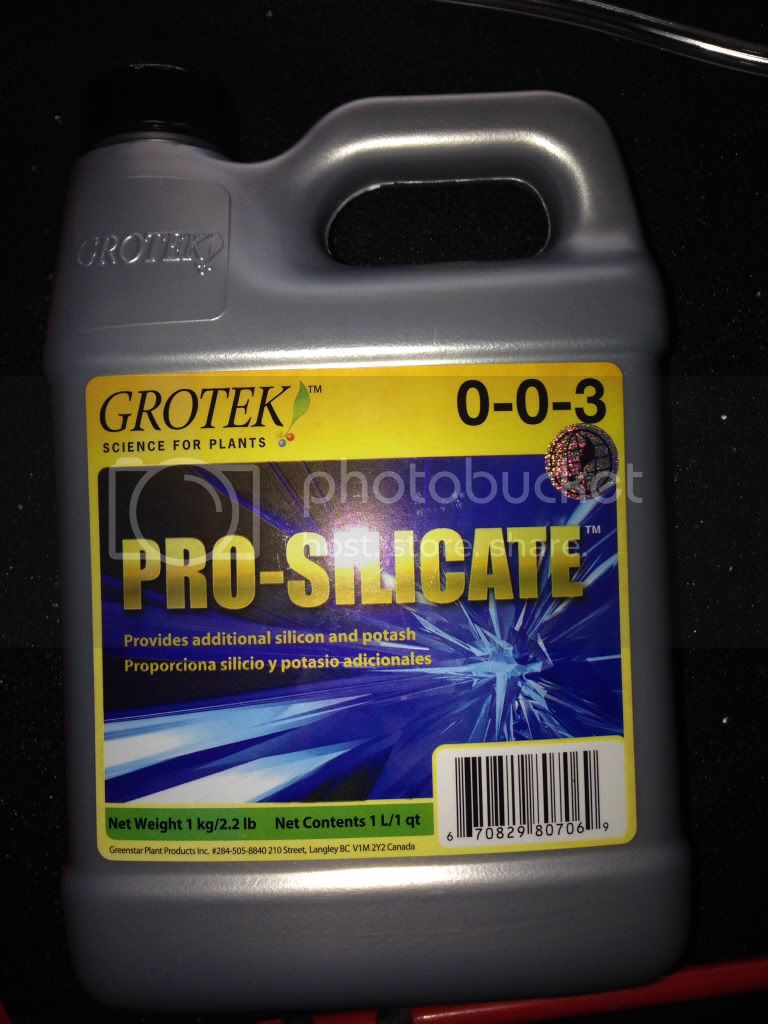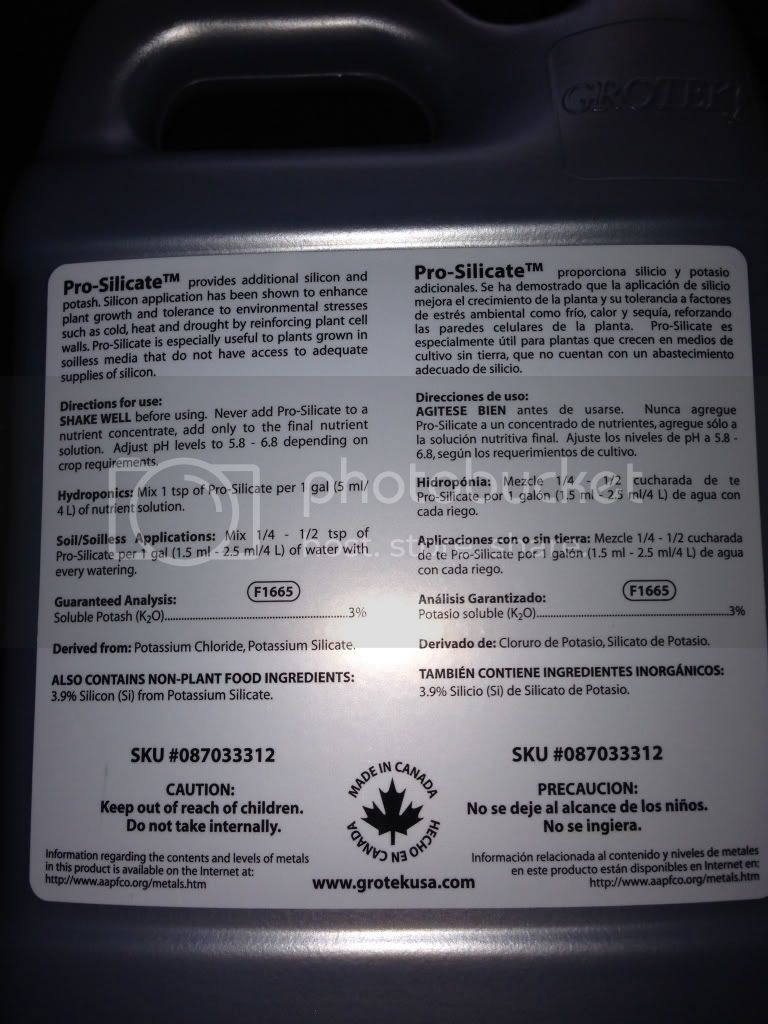FWIW, agsil is meant to be a fully water soluble source of potassium silicate, for use in fertigation, not for soil amending, or watering into plain jane soils.
i was never quite clear on why you wanted to use this stuff in the first place.
if you are growing organic, you might as well just supplement sillica via a variety of sillicaceous(sp?) minerals. Calcium silicate is one i think greenhouse growers use for ornamental... roses i think, because they are especially succeptable to mildews apparently. as noted above, the absence of sillica tends to make plants more susseptable to mildew, or so ive read. Calcium silicate is AKA silica lime i think?
the earths crust is like... all silicate based minerals. sillica is pretty damned abundant, what makes you think you need to supplement it anyway?
Typically only those growing on 'inert' mediums do this because its absent, or not chemically available to the plants. very very few field crops are supplemented with silica. i think rice maby, but idk.
you could jar test your soil if you like. if you have any appreciable amount of clay... which if i recall correctly, has tons of sillica. From there on, Ph will probably play the largest role here, with respect to silica availability.
silicone dioxide is NOT a source of silica, ive seen many folks suggest adding diatomaceous earth, which to myknowlage is like 100% sio2.
edit:
not saying agsil WONT add available silica/sillicates to your plants, its just thats its so expensive. Theres other cheaper ways to skin this cat, BUT if you have the cash, its probably the easiest/best way to add silica.
the math didnt make sense to me, especially considering myproblems with it. I would like to revisit it tho, but with v2 of my system + maby blended RO stock water, AND a better understanding of its chemistry and behavior, which i do not possess at this point and time.
i keep mentioning cost, btw, which might bug some of you, so sorry. I tend to nerd out hard on plant performance.
miguelovic said:
DAMNIT! I thought the same as soon as I saw this thread

I did mix DE in to the current mix to achieve this, but stopped the practice after reading about high levels of aluminum in some DE. Though apparently it is not such a concern.
you should be careful here, when people mention aluminum in natural soil, its almost 100% of the time an oxide of aluminum in a mineral. i suspect DE is mined from the earth considering what it is... so i also suspect this aluminum you speak of is the mostly harmless aluminum sillicate minerals. These could actually be a source of sillicate/sillic acid tho.
Is elemental(metallic) aluminum, toxic to plants? if that is the case, i was not aware.


